How to Organize Luggage Storage: Smart, Space-Saving Ideas for Home & Travel
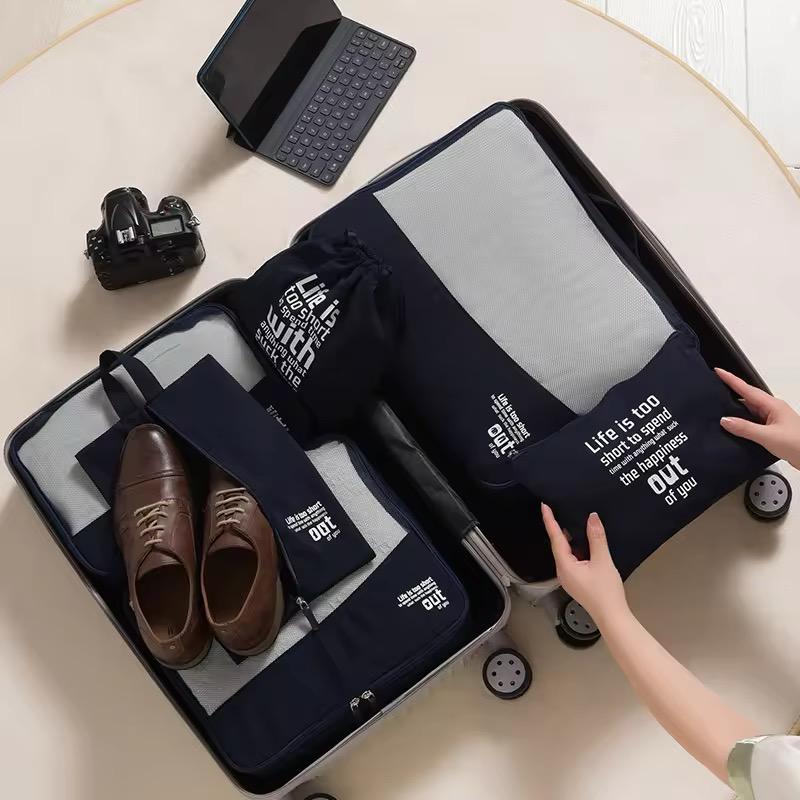
Luggage is one of those tricky household items. You can’t live without it for travel, but when it’s not in use, it suddenly feels like a bulky, awkward thing hogging valuable space. If you live in a compact apartment in Singapore or anywhere where every square meter matters you’ll know the frustration of squeezing a large suitcase into a closet that’s already bursting at the seams. And here’s the kicker: storing luggage the wrong way doesn’t just waste space. It can lead to mold growth in Singapore’s humid weather, cause deformation if it’s squashed under heavy items, and even invite pests if stored in the wrong spot. On the flip side, organizing your luggage storage properly will keep your bags in top condition, free up precious room, and make packing for your next trip much faster. In this guide, we’ll walk through the two big sides of luggage organization how to store empty luggage when you’re at home, and how to organize what’s inside for smooth, stress-free travel. 9 Ways How to Organize Luggage Storage 1. Know your goal before you start First, ask yourself: Why this matters: storing empty luggage is about placement, climate, and protecting the bag itself. Packing, on the other hand, is about fitting items logically so you can find them quickly and avoid a suitcase explosion the moment you open it. 2. Best places to store empty luggage at home High closet shelves If your closet has unused space above the hanging rod, that’s prime real estate. Stash your suitcase up there, lying flat to prevent handle or wheel strain. Before storing, clean the surface or lay down a shelf liner to avoid scratches. Under the bed Perfect for small flats. Slide your suitcase in horizontally; if it’s too tall, inexpensive bed risers can give you extra clearance. Use dust covers or old cotton sheets to protect it from dust and stray hair. Wardrobe gaps Some wardrobes have awkward side gaps where hangers don’t reach. These are great for upright suitcases. Just make sure they’re not pressed too tightly, as this can warp the frame over time. Climate-controlled storage spaces If you use a garage, storage unit, or attic, humidity is your biggest enemy. In Singapore’s weather, suitcases can develop mold within weeks if left unchecked. Always store them raised off the floor on a pallet or wooden board, and slip a few silica gel packets inside. Vertical hooks Lightweight duffel bags and carry-ons can hang from heavy-duty hooks mounted on walls. This works well in service yards or behind closet doors. 3. Make your luggage storage work harder One of the best tricks is nesting placing smaller suitcases inside larger ones, like Russian dolls. Inside the smallest case, you can store packing cubes, laundry bags, or even your beach gear. This technique can cut your luggage footprint in half. Another clever approach: turn your luggage into storage itself. If you’re short on closet space, fill unused suitcases with out-of-season clothing, spare bedding, or blankets. Avoid sealing these items in airtight plastic suitcases need to breathe to prevent musty smells. When stacking suitcases, always put the heaviest or largest at the bottom, and place lighter ones on top. Adding a non-slip mat between them will prevent shifting. 4. Protect against humidity, odors, and pests This step is critical in humid climates. Before storing, wipe your luggage inside and out with a slightly damp cloth and mild soap, then let it air-dry completely even a small trace of moisture can cause mold. Drop in a few silica gel packets or moisture absorbers before zipping it shut. For natural odor control, you can also place a small pouch of activated charcoal or even a handful of dry tea leaves in a breathable bag inside the suitcase. Avoid placing luggage directly against concrete or unsealed walls, as these surfaces can draw in moisture. If storing for long periods, unzip the case slightly to allow air circulation. 5. Organize inside the luggage for hassle-free travel When it comes to packing for a trip, your suitcase is only as good as its internal system. Here’s how to make it work for you: Packing cubesThink of them as drawers inside your suitcase. Assign one cube for tops, one for bottoms, one for underwear or give each family member their own color-coded set. Rolling vs foldingRolling clothes saves space and helps prevent deep creases in softer fabrics, while structured clothing (like blazers) should be folded to keep its shape. Shoe strategyPut shoes in thin bags or even shower caps to keep dirt away from clothes, and place them along the edges or bottom of the case for balance. Toiletries Always use a leakproof bag and keep it near the top or in an exterior pocket for easy access at airport security. Compression cubesThese squeeze out extra air to save space, but can cause wrinkles great for casual wear, not ideal for formal outfits. 6. Systems for frequent travelers If you travel often, keep a “ready-to-go” carry-on stocked with essentials a phone charger, basic toiletries, a universal adapter, and one change of clothes. Store it inside your main suitcase or in a dedicated shelf near your door. Color-code your packing cubes so you can identify them at a glance. Keep a digital packing checklist in your phone updating it after each trip ensures you don’t forget anything next time. 7. Creative storage ideas for small spaces 8. Affordable tools to make it easier You don’t need expensive gear to keep luggage organized: 9. Maintenance: your luggage’s “health check” Every 6–12 months, take your luggage out of storage, open it up, and air it out. Replace silica gel packets, wipe surfaces, and check for pests or early signs of mold. This keeps your suitcase in ready-to-use condition all year round. Final Thought With a little strategy, your luggage can go from being an awkward, bulky item that clutters your home to a well-organized, space-saving asset. By combining smart storage techniques, moisture protection, and
What Is a Professional Gift? A Clear Guide to Meaning, Etiquette, and Ideas

Professional gifts are more than just thoughtful gestures they’re tools that build relationships, show appreciation, and elevate your reputation in a business setting. But what exactly is a professional gift? When should you give one, and what kinds of gifts are appropriate? In this article, you’ll get a complete understanding of what is a professional gift, why it matters, and how to choose one the right way. What Is a Professional Gift? A professional gift is a carefully selected item or gesture exchanged in a work or business environment, usually to mark a meaningful occasion or to reinforce positive relationships. Unlike personal gifts, which can be sentimental or emotionally driven, professional gifts are chosen with purpose, subtlety, and a strong sense of etiquette. These gifts may range from simple desk accessories to premium corporate bundles, and the intent is usually to: Whether it’s a thank-you for a successful project, a gesture of holiday cheer, or a token of welcome for a new hire, professional gifts reflect a company’s culture and values while encouraging mutual respect. Why Are Professional Gifts Important? Professional gifts serve as silent ambassadors of your personal or corporate brand. They go beyond basic courtesy and can play a pivotal role in long-term business success. Here’s why they’re so important in today’s business landscape: When Should You Give a Professional Gift? Timing your professional gift properly is just as important as the gift itself. Giving a gift too early, too late, or during an inappropriate situation can send the wrong message. Here are some of the most suitable times to offer professional gifts: Keep in mind: Always check company gifting policies, especially in industries like finance or government where gifts may be restricted. Characteristics of a Good Professional Gift The most effective professional gifts share certain qualities that make them appropriate, thoughtful, and well-received. Before you choose a gift, consider the following characteristics: Also Read: Corporate Christmas Gift Ideas to Make a Lasting Impression This Holiday Season Examples of Popular Professional Gifts Here are specific examples categorized by recipient type to help you find the right gift for the right situation. For Clients: For Employees: For Bosses or Managers: For Business Partners: Remember: Always consider cultural norms. For example, giving alcohol may not be appropriate in certain cultures or religions. Common Mistakes to Avoid Even with the best intentions, poorly chosen gifts can send the wrong message or even offend the recipient. Here’s what to avoid: Final Thoughts Professional gifts are powerful tools for relationship-building when executed with care and respect. Whether you’re trying to impress a client, retain loyal employees, or nurture a new business connection, gifting is an art that requires attention to detail, timing, and context. It’s not about how much you spend it’s about how thoughtful and appropriate the gesture is. By choosing the right gift and presenting it with sincerity, you’re reinforcing the values of your brand, showing respect, and creating positive memories that last well beyond the exchange. Need help selecting or curating professional gifts that match your company’s branding? Consider partnering with a corporate gifting expert like Switts who can design custom solutions tailored to your audience and budget.
Corporate Christmas Gift Ideas to Make a Lasting Impression This Holiday Season

The end of the year is more than just a time to wrap up projects and crunch the numbers it’s a golden opportunity to express appreciation to those who contributed to your company’s success. One of the most meaningful ways to do this is by giving corporate Christmas gifts. Far from being a mere seasonal gesture, these gifts serve as a powerful bridge between professionalism and heartfelt gratitude. Whether you’re trying to retain your top clients, motivate your team, or recognize key partners, the right gift can turn a seasonal thank-you into a long-term relationship booster. Why Corporate Christmas Gifts Matter The corporate world is driven by connections. A well-timed, thoughtful Christmas gift isn’t just about giving it’s about showing that your company values people. Here’s why it matters: How to Choose the Right Corporate Christmas Gift Not all gifts are created equal. The challenge is to select something that feels personal, appropriate, and aligned with your brand’s image. Here’s how to get it right: Unique Corporate Christmas Gift Ideas Tired of sending out boring branded calendars? Here are carefully curated corporate Christmas gift ideas that combine elegance, usefulness, and the festive spirit. For Clients For Employees Also Read: What is a Corporate Gift? How to Impress Clients and Motivate Teams For Key Partners or Executives When to Send Your Corporate Christmas Gift Timing is crucial. Sending your corporate Christmas gifts too late means they could get lost in the holiday mail rush or worse, arrive after everyone has left for vacation. Tip: Add “Open on December XX” labels for a more coordinated unboxing moment. Corporate Christmas Gifting Etiquette To avoid missteps and ensure your gift is received positively, keep these etiquette pointers in mind: Final Thoughts Giving a corporate Christmas gift isn’t just a box-checking task it’s an opportunity to reflect your company’s character, express appreciation, and leave a positive, lasting impression. The most impactful gifts are not necessarily the most expensive they’re the ones that are relevant, thoughtful, and well-timed. As you prepare your holiday list this season, remember: people do business with people. A small gesture today could lead to bigger partnerships, stronger morale, and better relationships tomorrow. Want to make corporate gifting seamless this year? Let Switts Corporate gifts help you design and deliver premium gifts tailored to your brand and audience. We take care of everything from customization to delivery so you can focus on what matters most: building lasting connections.
How to Organize Moleskine Notebook: 5 Simple Ways to Maximize Every Page

Moleskine notebooks are known for their elegant design, durable covers, and smooth, high-quality paper making them a favorite among writers, creatives, professionals, and planners alike. But despite their premium feel, even the most beautiful notebook can become overwhelming if it’s filled with scattered notes, half-finished lists, or jumbled thoughts. Without a clear system, important ideas get buried, and productivity takes a hit. If you’ve ever flipped through your Moleskine trying to find that one meeting note or idea you jotted down last week, you’re not alone. The good news? A little structure goes a long way. In this guide, you’ll learn simple, effective ways to organize your Moleskine notebook so it works with you not against you. Whether you’re using it for work, journaling, goal tracking, or creative writing, these tips will help you transform blank pages into a powerful tool for clarity, focus, and daily momentum. 5 Simple Ways How to Organize Moleskine Notebook 1. Start With an Index Reserve the first 2–4 pages of your Moleskine notebook for an Index (also called a Table of Contents). As you add content, jot down the page number and a quick title. This small step makes it easy to find anything months from now. Example: Page Topic 3 April Goals 8 Marketing Meeting Notes 14 Startup Ideas 2. Divide Into Sections One of the simplest ways to bring order to your Moleskine notebook is to divide it into dedicated sections based on your needs. This helps prevent unrelated content from blending together and saves you time flipping through random pages. Depending on how you use your notebook, you might create sections for: To make these sections easy to locate, use colored sticky tabs, washi tape, or bold hand-drawn dividers on the edges of pages. Some users even create simple icons or doodles to visually separate themes. The goal is to create a layout that intuitively guides you to the right section, fast. Also Read: How Big is a Moleskine Notebook? A Complete Size Guide for Every Use Case 3. Set Up Monthly or Weekly Layouts If you use your Moleskine as a planner or goal tracker, setting up regular monthly or weekly spreads can keep you grounded and consistent. These layouts act as anchor points where you can visualize your schedule and priorities at a glance. Here’s how to build a simple weekly or monthly setup: You don’t need to use stencils or follow fancy bullet journal designs keep it functional and minimal if that suits your style. What matters is that this layout helps you align short-term tasks with long-term goals, all in one place. 4. Use the Back Pages for Collections and Lists The back of your Moleskine notebook is often overlooked, but it’s the perfect place for creating collections curated lists or logs you reference often. By starting from the final page and working your way forward, you keep these long-term notes separate from your daily or weekly entries. Here are some useful ideas to include in your collections: Because collections are often referred to more than written in, keeping them at the back prevents them from getting lost in your daily clutter. 5. Review Your Notebook Weekl No matter how neatly you set things up, a system is only effective if it evolves with your needs. Taking 10–15 minutes each week to review your notebook can make all the difference. Here’s what to do during your weekly review: This routine not only keeps your notebook organized, but also helps you stay in tune with your goals, avoid duplicate notes, and appreciate your own progress. Final Thoughts Mastering how to organize a Moleskine notebook transforms it from a simple writing tool into a personal command center one that helps you think clearly, plan intentionally, and capture creativity as it comes. Whether you’re managing complex work projects, journaling your daily experiences, or mapping out your next big idea, an organized notebook can bring calm to chaos and momentum to your goals. Consistency is key. By setting up sections, planning ahead with layouts, and reviewing your pages regularly, you’ll build a system that works for you, not against you. And the more you use it, the more valuable it becomes a record of thoughts, progress, and inspiration over time. If you’re ready to level up your productivity or gift someone a notebook that blends elegance with everyday practicality, explore the collection of premium Moleskine notebooks from Switts. Whether for corporate gifting, personal planning, or professional use, Switts offers a curated range of authentic Moleskine products that help turn ideas into action one page at a time.
Are Moleskine Notebooks Worth It? A Practical Guide Before You Buy

If you’ve ever browsed a stationery aisle, walked through a bookshop, or scrolled through Instagram for journaling, productivity, or creative inspiration, chances are you’ve spotted the iconic black cover and rounded corners of a Moleskine notebook. With its minimalist design, elastic closure, and premium feel, Moleskine has become more than just a notebook it’s a symbol of creativity, organization, and lifestyle. But with prices that can be two to five times higher than ordinary notebooks, it’s natural to wonder: Are Moleskine notebooks worth it? In this article, we’ll explore what sets Moleskine apart, break down the pros and cons, and help you decide if it truly fits your needs, your workflow, and your budget. What Makes Moleskine Notebooks Stand Out? Moleskine has built its brand around simplicity, elegance, and legacy. Inspired by the notebooks used by artists and thinkers like Picasso and Hemingway, Moleskine emphasizes more than just utility it sells an experience. Here’s what you get when you buy a Moleskine: Pros and Cons: Is the Price Justified? Moleskine notebooks are undeniably stylish and well-crafted but are they worth the higher price tag? To help you make an informed decision, let’s take a closer look at the tangible and intangible benefits, along with the common drawbacks. Pros: Design-Driven Aesthetic Moleskine notebooks are built with visual appeal in mind. Their sleek, minimalist design complete with rounded corners, a matching elastic band, and a ribbon bookmark makes them ideal for both professional and creative environments. Whether you’re pulling one out in a meeting or sketching in a café, it instantly adds a touch of elegance to your setup. Consistent Quality and Layout One of the biggest advantages of Moleskine is its reliability. From notebook to notebook, the design, paper tone, and construction remain consistent. That means you don’t have to guess what you’re getting you know the format, paper feel, and usability every time. A Symbol of Creativity and Intentional Living For many, a Moleskine notebook is more than just paper it’s a ritual. It signifies a mindset of intentional creativity, productivity, or reflection. Carrying a Moleskine can feel like being part of a quiet, global community of thinkers, writers, designers, and dreamers. Wide Range of Sizes and Styles Moleskine caters to different needs with a variety of options, including pocket-sized journals, large A5 notebooks, and extra-large versions. You can also choose between hard or soft covers, plain or ruled pages, dotted grids, sketchbook-grade paper, or even planners. It’s a notebook brand that grows with your workflow. Cons: Premium Price Tag Moleskine notebooks typically cost two to five times more than other quality notebooks on the market. While you’re paying for design and branding, it can feel like a steep investment especially for students, bullet journal beginners, or heavy note-takers who go through notebooks quickly. Not Ideal for All Pens While the paper is smooth and works well with most pens, it’s not the best for every writing instrument. Users of fountain pens or bold gel pens often experience ghosting (ink showing through the back of the page) or minor bleed-through, which can be frustrating if you write on both sides of the paper. You’re Paying for the Name Let’s be honest part of what you’re buying is the prestige of the Moleskine brand. Similar features and paper quality can often be found in more affordable alternatives. If you’re not swayed by branding or aesthetic value, Moleskine may not feel like a justified expense. Who Should Buy a Moleskine Notebook? Moleskine notebooks aren’t just for anyone who needs paper they’re for people who care about how they write, where they write, and what that writing means to them. While they may not be essential for everyone, there are specific groups of people who will find real value in the Moleskine experience. Writers and Journalers If writing is more than a task and closer to a ritual for you, Moleskine notebooks can become part of that daily rhythm. The smooth paper, elegant design, and tactile feel help set the tone for creative writing, reflective journaling, or morning pages. Many writers enjoy the act of opening a Moleskine it feels intentional, almost sacred. It’s the kind of notebook that invites you to slow down and be present with your thoughts. Professionals and Entrepreneurs Whether you’re taking notes during a client meeting, sketching out business ideas, or managing your schedule, a Moleskine sends the message that you’re organized and detail-oriented. Its clean aesthetic is professional yet not sterile, striking a balance between corporate and creative. For those who want to make a subtle but impactful impression in the workplace, pulling out a Moleskine beats a spiral notebook any day. Gift Seekers and Thoughtful Givers Because of their elegant packaging and premium presentation, Moleskine notebooks make fantastic gifts. Whether for a graduating student, a new manager, an artist friend, or a partner who loves journaling, a Moleskine shows care and thoughtfulness. It’s a practical gift that still feels personal, especially when paired with a nice pen or a handwritten message inside. Also Read: What is a Moleskine Notebook? Discover Its Features & Uses When Moleskine Might Not Be Worth It As iconic as Moleskine notebooks are, they’re not the right fit for everyone and that’s perfectly okay. Depending on your writing habits, budget, and specific needs, you may find that the premium price doesn’t always match the value you’re looking for. If You’re Budget-Conscious Moleskine’s price point can be hard to justify if you’re a student, a frequent note-taker, or someone who fills up notebooks quickly. Spending $20 or more on a single notebook may not be practical when there are alternatives that offer similar functionality at a fraction of the cost. For many people, especially those who view notebooks as disposable tools rather than treasured items, a cheaper option makes far more sense. If You Use Fountain Pens or Wet Ink While Moleskine’s paper is smooth and pleasant for ballpoint pens and pencils, it falls short for serious fountain pen users. The relatively
How Big Is a Moleskine Notebook? A Complete Size Guide for Every Use Case
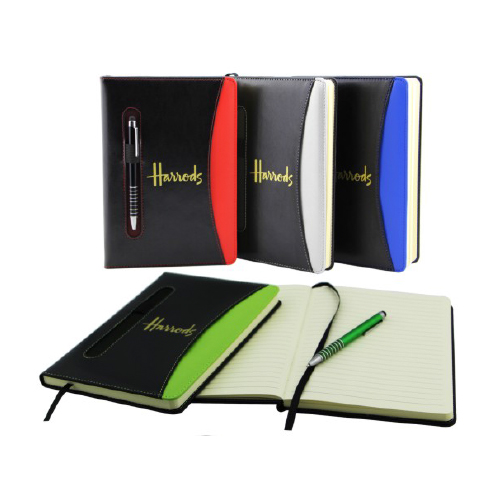
Moleskine notebooks have become iconic companions for creatives, professionals, students, and planners worldwide. But if you’re thinking of buying one or just curious about the sizes you might find yourself wondering: How big is a Moleskine notebook, really? The answer isn’t as straightforward as you might expect because Moleskine offers a wide variety of sizes tailored for different purposes. Whether you’re journaling, sketching, taking notes in meetings, or carrying it in your pocket, the right Moleskine size can make a big difference. Let’s break it down and explore the different Moleskine notebook sizes, why they exist, and how to choose the one that suits your lifestyle. Understanding Moleskine Sizing Moleskine uses names like “Pocket,” “Large,” “XL,” and “A4” to classify its notebooks. But these labels don’t always correspond perfectly to traditional paper sizes like A5 or A6. That’s why many users are confused at first glance. For example, Moleskine’s “Large” size is often mistaken for A5, but it’s actually slightly narrower and taller. Here’s what you need to know: Moleskine sizes are measured in inches or centimeters, and the dimensions may vary slightly depending on the notebook type (classic hardcover, softcover, cahier, etc.). Still, there are general size standards across most of their products. Pocket – 3.5 x 5.5 inches (9 x 14 cm) Small and portable, perfect for capturing ideas on the go. It fits easily in bags, pockets, or even a wallet. This size is great for jotting down quick thoughts, checklists, or travel notes. While compact, the page area is limited best suited for those who prioritize convenience over writing volume. Large – 5 x 8.25 inches (13 x 21 cm) The go-to for many users. Ideal for journaling, note-taking, and everyday productivity. It’s slightly narrower than an A5 sheet but offers enough writing space without being bulky. The size strikes a practical balance: portable enough to carry daily, yet spacious enough for longer entries or business notes. A5 – 5.83 x 8.27 inches (14.8 x 21 cm) While Moleskine doesn’t officially brand any notebooks as A5, many users compare the “Large” size to this international standard. A5 paper is slightly wider and a little shorter than Moleskine’s Large size. It’s widely used in other notebook brands and printers. If you’re transitioning from a true A5 notebook, expect a subtle difference Moleskine Large is slimmer but slightly taller. Functionally, though, the writing experience remains quite similar. XL – 7.5 x 10 inches (19 x 25 cm) Perfect for people who need more room to write or sketch. This size strikes a balance between portability and a more spacious writing surface. Commonly used by students, creatives, and professionals, the XL format allows more freedom for visual thinking, mapping ideas, or longer documents without the bulk of a full A4. A4 – 8.25 x 11.75 inches (21 x 29.7 cm) The largest standard Moleskine, best for detailed work, business planning, or educational settings where more space is essential. This size is excellent for desktop use, large-scale sketches, mind maps, or study notes. However, it may be too big for everyday carry or casual journaling. A6 (Volant & Cahier only) – Roughly 4 x 6 inches (10 x 15 cm) Used mostly in softcover lines like Volant and Cahier. Compact and useful for lightweight needs like quick notes or checklists. A6 notebooks are often sold in packs and feature fewer pages, making them ideal for short-term projects, daily logs, or travel lists. Keep in mind: sizes may vary slightly based on binding and page count, but the difference is usually marginal. Also Read: What Is a Moleskine Notebook? Discover Its Features & Uses Why Size Matters When Choosing a Moleskine Size isn’t just a number it directly impacts how you use your notebook. If you’re someone who’s always on the move, a Pocket-size Moleskine is a reliable choice that won’t weigh you down. On the other hand, if you’re a designer, student, or strategist who needs space to draw or map out complex ideas, the XL or A4 sizes offer the creative freedom you need. The binding type also affects usability. Hardcovers provide a solid writing surface even without a desk, while softcovers are more flexible and easier to carry. The paper layout (ruled, dotted, plain, or grid) further enhances the versatility of each size depending on your goals. What About Page Count? Page count can vary depending on the size and collection. Classic hardcover Moleskines usually contain 192 pages in the Large size, but the XL might have 120 or 176 depending on the paper thickness and product line. Cahier notebooks generally have fewer pages (around 80), but they’re lighter and often come in multi-packs. Choosing the Right Moleskine for You If your goal is to jot down daily notes or maintain a bullet journal, the Large size is usually the most balanced option. For travel logs or fieldwork, Pocket is ideal. If you sketch, brainstorm, or take longer-form notes, XL or A4 might serve you better. Still unsure? Ask yourself: Answering these questions can help you pick the perfect size for your needs. Final Thoughts So, how big is a Moleskine notebook? The answer depends on what you need. From the ultra-portable Pocket to the workspace-ready A4, Moleskine offers a thoughtful range of sizes for every kind of thinker, creator, and planner. Understanding the dimensions and use cases for each notebook can make your decision easier and your note-taking experience smoother. Ready to find the perfect fit? Whether you’re looking for a pocket-sized travel buddy or a full-sized creative journal, Moleskine Notebooks by Switts has a size that’s just right for you.
What Is a Moleskine Notebook? Discover Its Features & Uses

Whether you’re an artist, a writer, a student, or simply someone who loves to stay organized, the tools you use every day shape how you think, work, and create. Among those tools, few are as iconic or as beloved as the Moleskine notebook. It’s not just paper bound in a cover; it’s a canvas for your imagination, a planner for your ideas, and a companion for your thoughts. If you’ve ever wondered why Moleskine notebooks have earned a cult-like following across the globe, you’re in the right place. What Is a Moleskine Notebook? A Moleskine notebook is a high-quality, premium notebook brand known for its sleek design, smooth paper, and durable cover. It typically features a black or colored cover, rounded corners, an elastic closure, and a ribbon bookmark. Originally inspired by the notebooks used by famous artists and writers like Picasso and Hemingway, Moleskine notebooks are now popular around the world for writing, journaling, sketching, planning, and creative work. A Legacy of Creativity The modern Moleskine notebook is inspired by the legendary black notebooks once used by iconic creatives such as Vincent van Gogh, Pablo Picasso, Ernest Hemingway, and Bruce Chatwin. These early notebooks, often handmade and hard to find, were known for their durability and the quality of their paper. In 1997, the Moleskine brand was born in Milan, Italy, reviving this legendary design. Since then, it has become a symbol of artistic tradition blended with modern innovation. Distinctive Features of a Moleskine Notebook What sets a Moleskine notebook apart from ordinary notebooks isn’t just its heritage but the thoughtful, high-end details that define every page and component. Here’s what makes a Moleskine unmistakably unique: Classic Design Each Moleskine notebook features a minimalist yet iconic design: rounded corners for a softer aesthetic, a strong elastic band that wraps securely around the cover to keep it closed, and a ribbon bookmark that helps you find your page in seconds. This elegant combination not only enhances usability but also gives Moleskine its instantly recognizable, professional look. Expandable Inner Pocket Located inside the back cover, the expandable pocket is a hidden gem for organizing loose items. Whether you want to store business cards, travel tickets, receipts, or quick notes, this built-in folder keeps small papers neatly tucked away ideal for those who are always on the move. High-Quality, Acid-Free Paper The pages inside a Moleskine are crafted from smooth, ivory-colored, acid-free paper designed to preserve your writing for years. The texture strikes the perfect balance soft enough for fountain pens and ink to glide across effortlessly, yet sturdy enough to resist bleed-through from most pens, pencils, and markers. It’s a dream canvas for writers, artists, and thinkers. Range of Sizes and Formats Moleskine understands that creativity and productivity don’t come in just one shape. That’s why its notebooks are available in several sizes from small pocket notebooks that fit in your palm to larger A5 and XL formats perfect for journaling or project planning. You can also choose your preferred page style: Durable Cover Options Whether you prefer the rigid feel of a hard cover or the flexibility of a soft one, Moleskine offers both each designed to protect your notes while looking sharp and feeling smooth. Available in timeless black as well as a variety of modern colors and limited-edition prints, there’s a style for every personality, from minimalist to expressive. Why People Love Moleskine Notebooks People don’t just buy Moleskines for how they look they buy them for how they feel. Holding a Moleskine notebook gives a sense of purpose. Whether you’re writing morning pages, sketching during travel, or managing your schedule, a Moleskine offers a tactile, intentional experience that digital devices can’t match. They’re also widely used as gifts for students, executives, and creatives. Their premium feel and minimalist branding make them suitable for both personal and professional settings. Moleskine in Today’s Digital World Even in the age of smartphones and tablets, Moleskine continues to innovate. With smart notebooks that integrate with apps and cloud storage, you can digitize your handwritten notes and sketches in seconds merging analog and digital in one seamless experience. This hybrid appeal makes Moleskine ideal for those who want the best of both worlds: the focus and calm of pen-and-paper with the convenience of digital access. Discover the Perfect Moleskine for You Whether you’re looking for a stylish journal, a reliable planner, or a thoughtful gift, there’s a Moleskine notebook designed for your needs. Browse our curated collection of classic and limited-edition Moleskine notebooks, all designed to help you express, organize, and elevate your ideas. Ready to find your next notebook companion? At Switts, we offer a carefully curated selection of authentic Moleskine notebooks perfect for journaling, sketching, planning, or gifting. Whether you’re starting a new project or simply want to stay organized in style, there’s a Moleskine waiting to be part of your journey. Explore our Moleskine notebooks collection and discover the notebook that suits your personality and purpose.
Understanding Plush Toys Stuffing: From Polyfill to Organic Wool
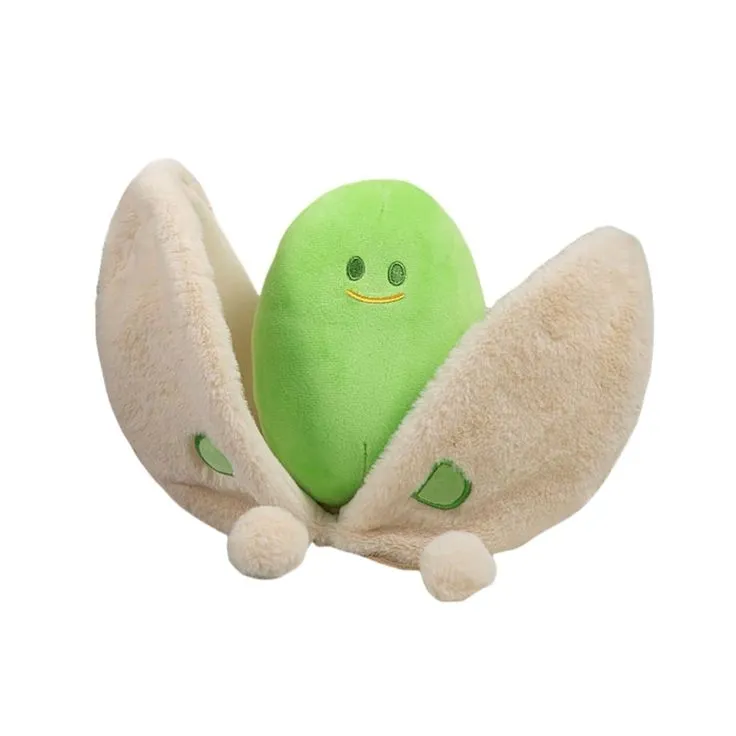
Plush toys are a beloved item for children, adults, and collectors alike. But have you ever wondered what makes them so soft and huggable? The secret lies in what’s inside the stuffing. Understanding what plush toys are stuffed with not only satisfies curiosity but also helps consumers make informed decisions, especially for those with allergies, sustainability concerns, or product safety in mind. What Are Plush Toys Stuffed With? Common Stuffing Materials Used in Plush Toys 1. Polyester Fiberfill (Polyfill) The most widely used stuffing in modern plush toys is polyester fiberfill, often referred to as polyfill. This synthetic material is soft, fluffy, lightweight, and hypoallergenic. It gives plush toys their squishy texture while being safe for children. Polyfill is also washable, making it ideal for toys that may need frequent cleaning. 2. Cotton Some plush toys, especially handcrafted or organic options, use natural cotton as stuffing. Cotton provides a firmer feel compared to polyfill and is valued for being biodegradable and eco-friendly. 3. Wool Wool stuffing is less common but still found in high-end or natural plush toys. It’s a sustainable material with good insulation and moisture-wicking properties. However, wool can trigger allergies in sensitive individuals. 4. Beans, Pellets, or Beads Some plush toys are partially filled with plastic pellets, beans, or microbeads to add weight or texture. These are usually enclosed in a separate pouch inside the toy to provide a beanbag-like feel. This stuffing helps plush toys sit upright or have a tactile, sensory experience. 5. Recycled Materials As sustainability becomes a priority, many manufacturers now use recycled polyester or recycled cotton to fill plush toys. These options reduce waste while maintaining the softness and quality expected from traditional fillings. Also Read: Can Plush Toys Be Dry Cleaned? Which Stuffing Is Best? There is no one-size-fits-all answer it depends on the purpose of the plush toy: Are Plush Toy Stuffings Safe? Yes, most modern plush toys meet international safety standards. Manufacturers use non-toxic, flame-retardant, and hypoallergenic materials. However, it’s always important to check product labels, especially for young children. Plush toys with bead or pellet fillings should be double-stitched or have safety linings to prevent choking hazards. Can Stuffing Be Replaced or Recycled? In some cases, plush toy stuffing can be replaced especially in the case of older or torn toys. DIY plush restorers often open seams and refill toys with new stuffing. As for recycling, while polyfill is not always curbside recyclable, some textile recycling programs do accept plush toys. Opting for toys with recycled or natural stuffing from the start is a more eco-friendly choice. Final Thought Understanding what plush toys are stuffed with can help you choose the right toy whether you’re looking for something soft and huggable, safe for kids, or kind to the planet. From polyester fiber to eco-friendly cotton or beads for texture, each material offers its own benefits. If you’re looking for plush toys that combine softness, safety, and sustainable design, check out the Switts Plush Toy collection carefully crafted to bring comfort and joy for all ages.
What Plush Toys Are Worth Money?
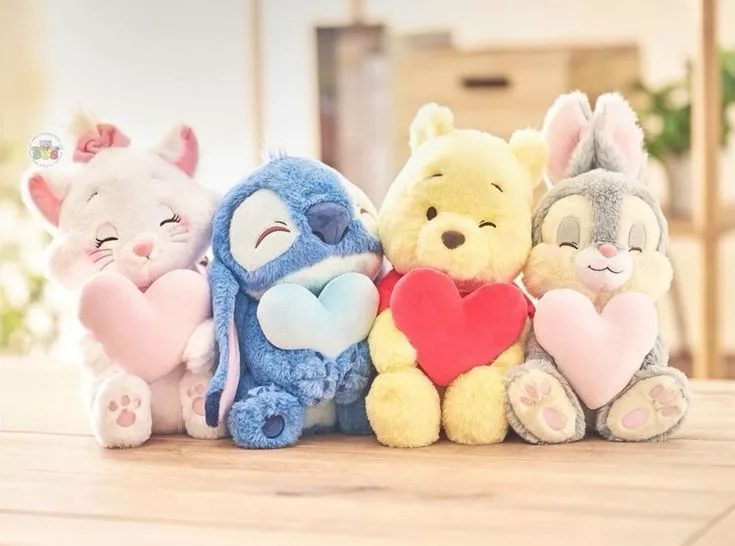
Plush toys aren’t just childhood companions some have become coveted collector’s items worth hundreds or even thousands of dollars. If you’ve stumbled across an old plush toy in your attic or are curious about starting a plush collection. You might be wondering: what plush toys are actually worth money? This guide will help you identify valuable plush toys, understand what makes them collectible, and how to determine their worth. Why Some Plush Toys Are Valuable Not all plush toys are created equal. While many are mass-produced and widely available, some become rare over time due to limited production, popularity, or nostalgic demand. Here are key reasons why certain plush toys appreciate in value: Examples of Plush Toys That Are Worth Money If you’re looking for specific examples, here are plush toys that are known to be highly valuable in today’s market: 1. Beanie Babies (Original Ty Beanies) Ty Beanie Babies dominated the ‘90s and are still popular among collectors. Certain rare ones like Princess the Bear, Peanut the Royal Blue Elephant, or Claude the Crab have been sold for hundreds or thousands of dollars, especially with tag errors or rare variants. 2. Vintage Steiff Bears Steiff, a German brand known for its button-in-ear trademark, has been producing high-end plush toys since the 1800s. Some vintage Steiff bears can be worth over $5,000 depending on their age, condition, and model. 3. Disney Store Limited Editions Exclusive plush toys from the Disney Store especially limited releases like anniversary editions or park-only exclusives can be worth a significant amount. Think characters like Sorcerer Mickey, rare Stitch experiments, or Duffy and Friends plush sold only in Japan or at DisneySea. 4. Pokémon Center Plush Toys Plush toys from Japan’s Pokémon Center, especially older models or region-exclusive designs like Gengar plush cushions, Giant Snorlax, or Lifesized Lucario, can be extremely valuable among collectors. Also Read: Are Plush Toys for Adults? Yes, and Here’s Why They Matter More Than You Think 5. Anime & Gaming Plushies (Japan-Only Releases) Plush toys based on anime or game franchises like Sanrio, Final Fantasy, or Studio Ghibli that were never sold outside Japan often skyrocket in value due to demand and low global availability. 6. Build-A-Bear Collaborations While Build-A-Bear offers mass-market plush, certain collaborations such as with Pokémon, Harry Potter, or limited-run Star Wars characters can appreciate over time, especially if kept in pristine condition. How to Tell If Your Plush Toy Is Valuable If you suspect your plush toy might be worth money, here’s how to check: Where to Sell or Buy Valuable Plush Toys If you want to sell a valuable plush, or invest in a rare one, consider these platforms: Final Thoughts The world of plush toy collecting is both nostalgic and lucrative. Whether you’re dusting off old childhood toys or diving into a new collector hobby, knowing what plush toys are worth money can help you make informed decisions. Rarity, brand, condition, and cultural connection all play a role in determining value. And if you’re looking to build a valuable plush collection or gift high-quality, collectible plush toys, check out Switts a trusted plush toy store with curated, lovable designs perfect for both collectors and everyday joy.
Can Plush Toys Be Dry Cleaned?
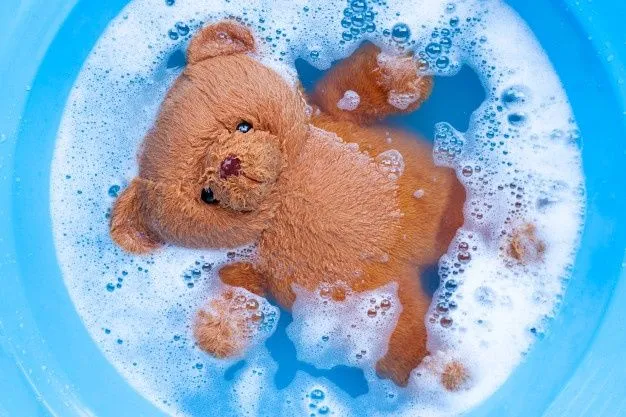
Plush toys are more than just cute companions they can hold sentimental value, comfort children during tough times, and even become collectibles. But with frequent handling, spills, or time spent on dusty shelves, they inevitably need a good clean. If you’re wondering, can plush toys be dry cleaned?, you’re not alone. Let’s explore whether dry cleaning is a safe method and what alternatives you might consider. Is Dry Cleaning Safe for Plush Toys? In general, dry cleaning is not recommended for most plush toys. While dry cleaning is effective for removing grease and tough stains from delicate fabrics, it often involves harsh chemicals such as perchloroethylene (perc), which may damage the plush fabric or inner stuffing, or worse, leave behind residues that can be harmful to children or pets. That said, some high-end or collectible plush toys made from specialty materials might be labeled as dry clean only. If you find a care tag that specifically states “dry clean only,” take it to a reputable cleaner and mention it’s a plush toy, especially if it has delicate features like glass eyes, beads, or metallic threads. Why Dry Cleaning Isn’t Ideal for Most Plush Toys There are several reasons why plush toys typically don’t fare well with dry cleaning: Safer Alternatives to Dry Cleaning Plush Toys Instead of dry cleaning, consider these safer, more accessible cleaning methods: 1. Surface Cleaning Use a damp cloth with a mild soap solution to gently wipe the toy. This is especially useful for toys with built-in electronics or glued accessories. 2. Hand Washing For plush toys without electronics, hand washing in lukewarm water with gentle detergent is often the safest option. Soak the toy, gently scrub with your hands or a soft brush, rinse well, and air-dry thoroughly. 3. Machine Washing (With Caution) If the care label allows, you can machine wash plush toys using a laundry bag or pillowcase to protect them. Always use a delicate cycle with cold water and mild detergent. Avoid using a dryer unless the toy is very durable. 4. Steam Cleaning Steam is effective at sanitizing surfaces without harsh chemicals. Use a handheld garment steamer to freshen up plush toys, but avoid prolonged exposure to avoid melting synthetic materials. What to Check Before Cleaning Before deciding how to clean your plush toy, check: If you’re unsure, it’s always safest to stick with hand washing or surface cleaning. Final Thought: Keep It Clean and Safe Dry cleaning might seem like a professional option, but it’s not ideal for most plush toys due to chemical sensitivity and construction concerns. Whenever possible, opt for hand washing or surface cleaning to protect your toy’s appearance and longevity especially if it’s meant for children. At Switts, we offer a range of plush toys designed with both cuteness and cleanability in mind. Many of our products are made with machine-washable materials and child-safe fabrics, making them easy to maintain without extra hassle. Whether you’re buying for your child, your brand, or a special gift, Switts plush toys are made to last and easy to love.


